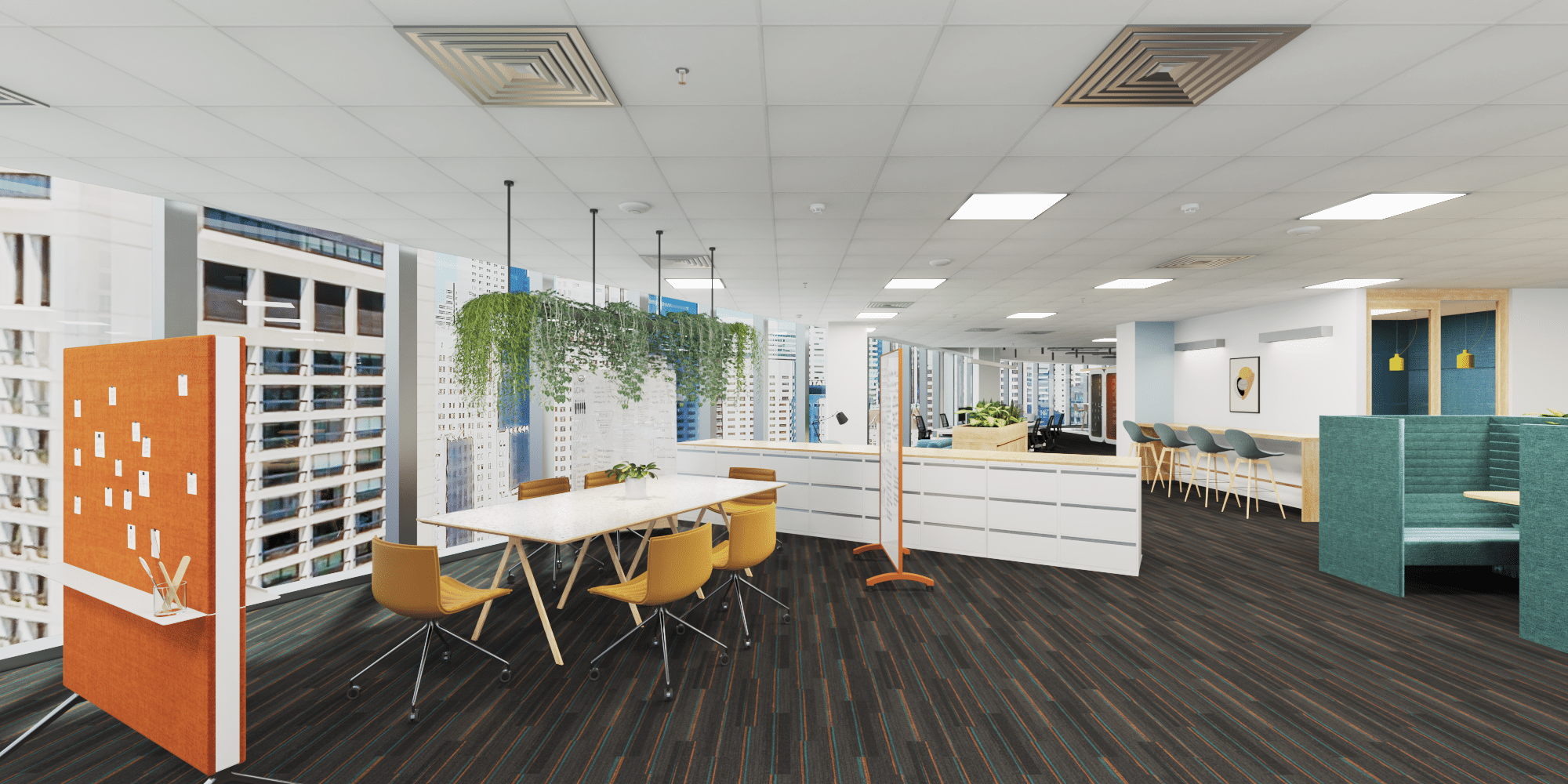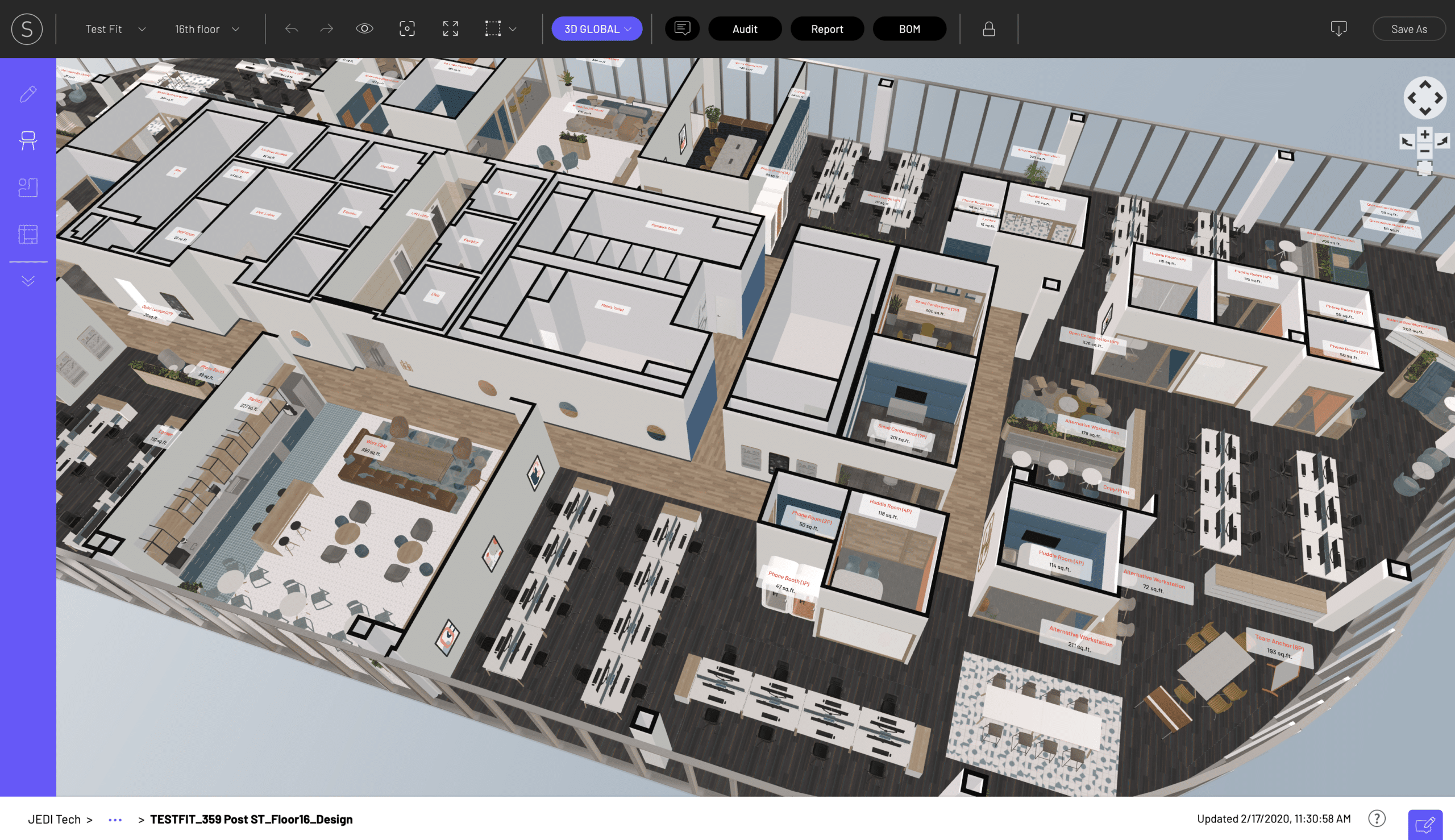Workplace design processes are changing–especially when it comes to effectively engaging stakeholders. Learn more in this week’s blog post.
During many of my conversations with occupiers, workplace, and RE teams over the last two years, I have repeatedly heard many feel like they’re in uncharted territory. It’s difficult to plan for the future and unclear how to better position their spaces to adapt to future disruption. Workplace strategy in the Covid-era is murky and how exactly office space will–or will not–be used in the future, is highly specific to the organization and how their teams work.
As companies try to adapt to hybrid working strategies, approaching this shift can no longer depend on pre-pandemic practices and procedures.
Those starting new RE projects, renovating existing space, or setting policies for their current portfolio, have faced a new set of challenges as we can no longer rely on business as usual design workflows. A critical component in the success of any CRE project hinges on effective stakeholder engagement during the design process. As office space should change with evolving workforce trends and expectations, so should the ways in which we collaborate with decision-makers and stakeholders.
Before the pandemic, it was designers and stakeholders all in the same room, evaluating furniture, space, and design. Now, in our Zoom world, this type of visceral experience isn’t possible. Designers now have to find new ways to translate physical elements via digital means–a digital means that is as “real-life” and immersive as possible.
Realistic context in digital realms
In many cases, providing stakeholders with realistic visual context via digital means can help virtual walkthroughs feel more immersive and realistic.
Providing realistic, 3D visuals is becoming an industry norm. However, if the floorplan and visuals don’t reflect real-life visual queues outside of the office–e.g., how close a building across the street is or what the view of the park will look like from the boardroom–stakeholders will have a hard time connecting with the digital realm being presented to them.
 For example, I recently was working with a client who was doing their preliminary site selections when traveling to multiple locations wasn’t an option. Amidst the selections, one of the occupier team’s stakeholders wasn’t connecting with any of the 2D floorplans and seemed to be struggling to give input and make a decision.
For example, I recently was working with a client who was doing their preliminary site selections when traveling to multiple locations wasn’t an option. Amidst the selections, one of the occupier team’s stakeholders wasn’t connecting with any of the 2D floorplans and seemed to be struggling to give input and make a decision.
Knowing stakeholders sometimes need additional context, I worked with the design team to add the surrounding buildings to show their proximity and height in comparison to their new office floor. The next time the floorplan was presented to the stakeholder, they connected with the space almost immediately. They were able to “walk” the space in 3D and experience what they could expect the view from their desk to be.
Every designer knows that attention to detail is everything, and in our new world of having to showcase space via virtual realms, this attention to detail must increase. Sometimes in the rush to prepare for presentations and organize material options, we forget that as designers we’ve had years of experience reading and interpreting space from 2D drawings. Not everyone is comfortable committing to multi-million dollar projects without first understanding things like views, ceiling heights, visitor experience, and materiality.
Making the design process easy for non-visual thinkers
Contextual visuals in design presentations–such as exterior views–are a great way to communicate with non-visual thinkers. It helps those who don’t have experience with virtual floorplans properly visualize the design in an immersive way. As an executive at a pharmaceutical company noted about Saltmine’s presentation of a recently designed space:
“With Saltmine, I’m able to get it. I can actually imagine working here.”
This enhancement to the design process also allows for more detailed discussions earlier in the design process. As a result, we have repeatedly seen shortened design cycles as more high quality, immersive visuals are presented earlier in the project. Being able to see things like the visitor entry sequence or the all-hands space through HD renderings and 3D walkthroughs during an early schematic design presentation, can help collect critical feedback while there is more flexibility for changes.

Streamlining approval processes
Saltmine allows workplace designers to not only enhance stakeholder engagement via immersive design files but furthermore streamlines the historically lengthy approval processes.
The traditional RE process is where a design team would present a grayscale, 2D floorplan, receive feedback, make changes, send it back, etc. This traditional approval process involves a lot of back and forth, meeting notes, emailed mark-ups, and is an overall messy way to get a floorplan approved. With Saltmine, designers and stakeholders can participate in live design sessions. This allows for feedback to be received in real-time so designers can make changes on the fly and have them approved immediately.
From small changes like carpet colors and furniture orientation, to larger things like adding huddle rooms and phone booths–all of these changes can be made in real-time by designers and stakeholders which substantially decreases approval process timelines. It also decreases the need to make these types of costly and timely decisions later in the final stages.
Studying changes to enhance employee engagement
At the end of the day, office design should be focused on meeting the spatial needs–and demands–of the employee. Designing configurable spaces that can be iterated allows designers and stakeholders to evolve space over time and provides flexibility for the unknown.
My position at Saltmine has allowed me a window into how large design teams are evolving their processes to meet the needs of today and tomorrow’s projects. Either when helping to provide additional design context or studying design changes during a progress call, we are utilizing new toolsets of digital platforms to help us communicate more effectively. Most of us have now experienced what it’s like to not work from an office and in many cases it has helped us better define what is most essential for us in the workplace.
Enjoying our blog? Be sure to subscribe to stay up-to-date on Saltmine's original content with the form below!
 by
by